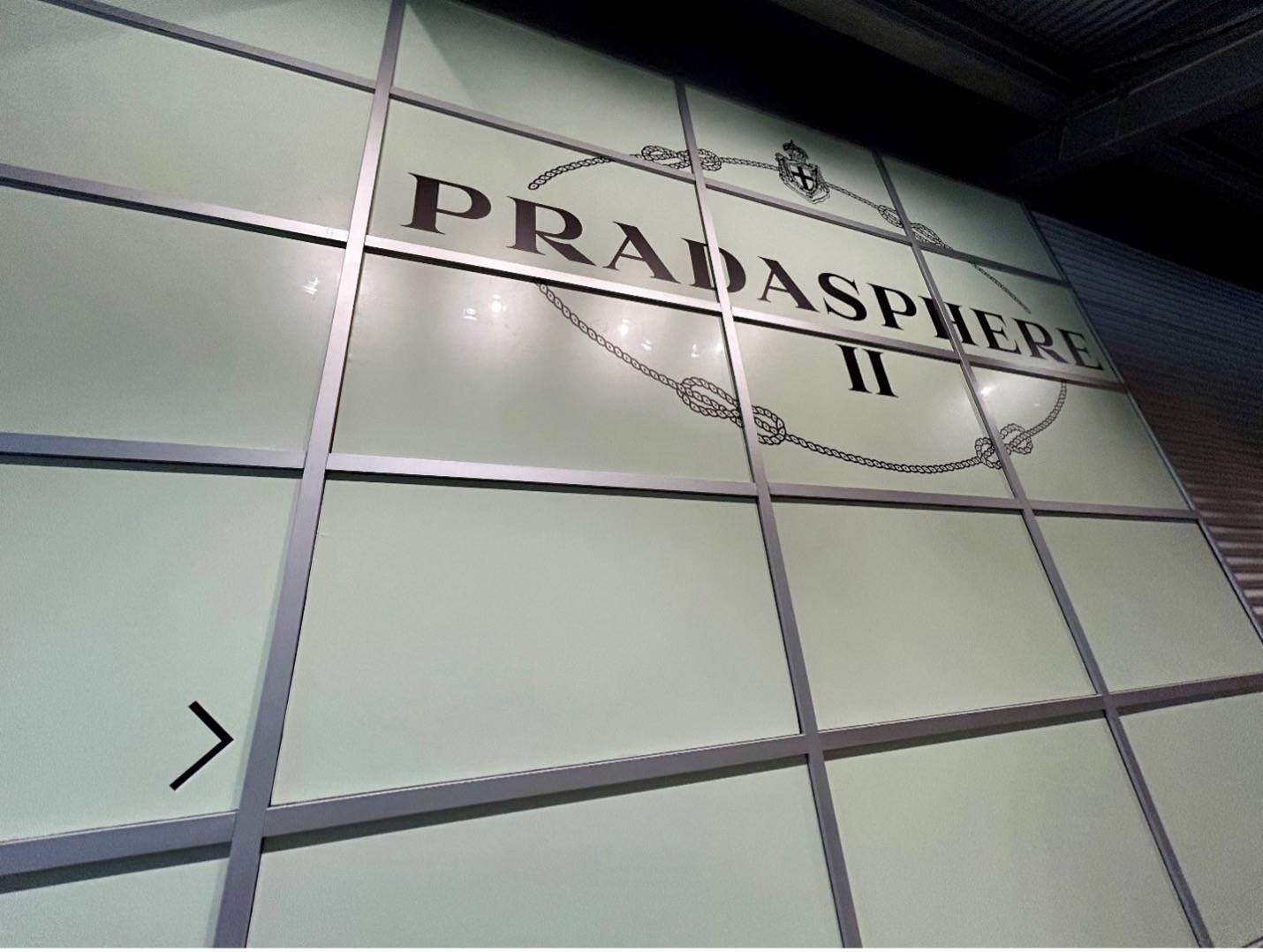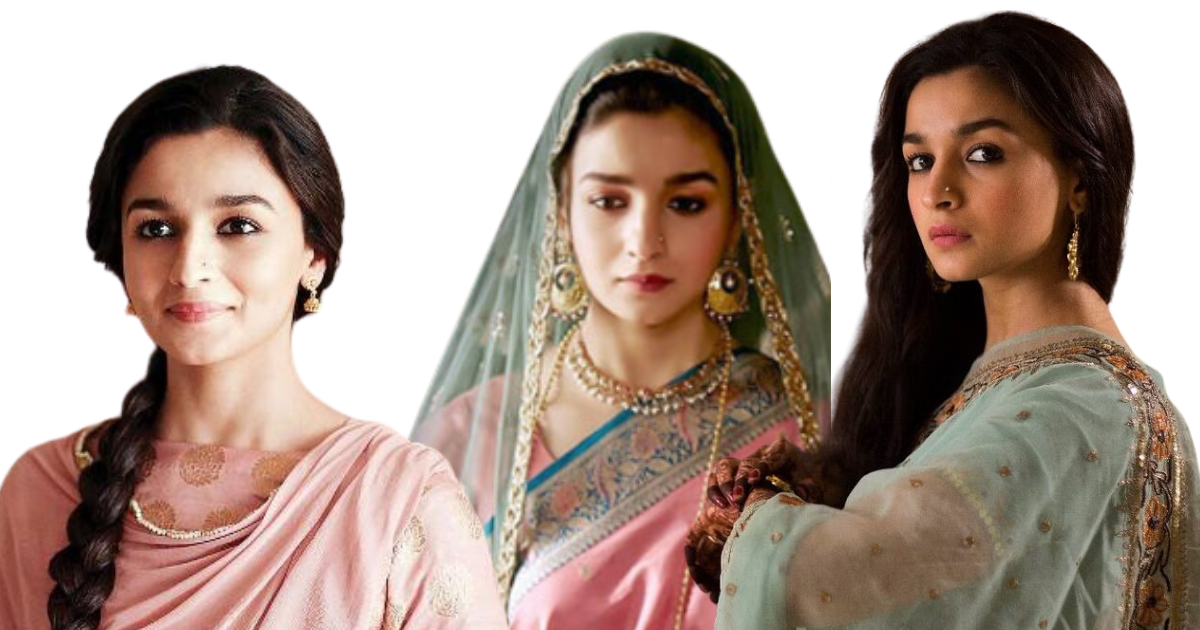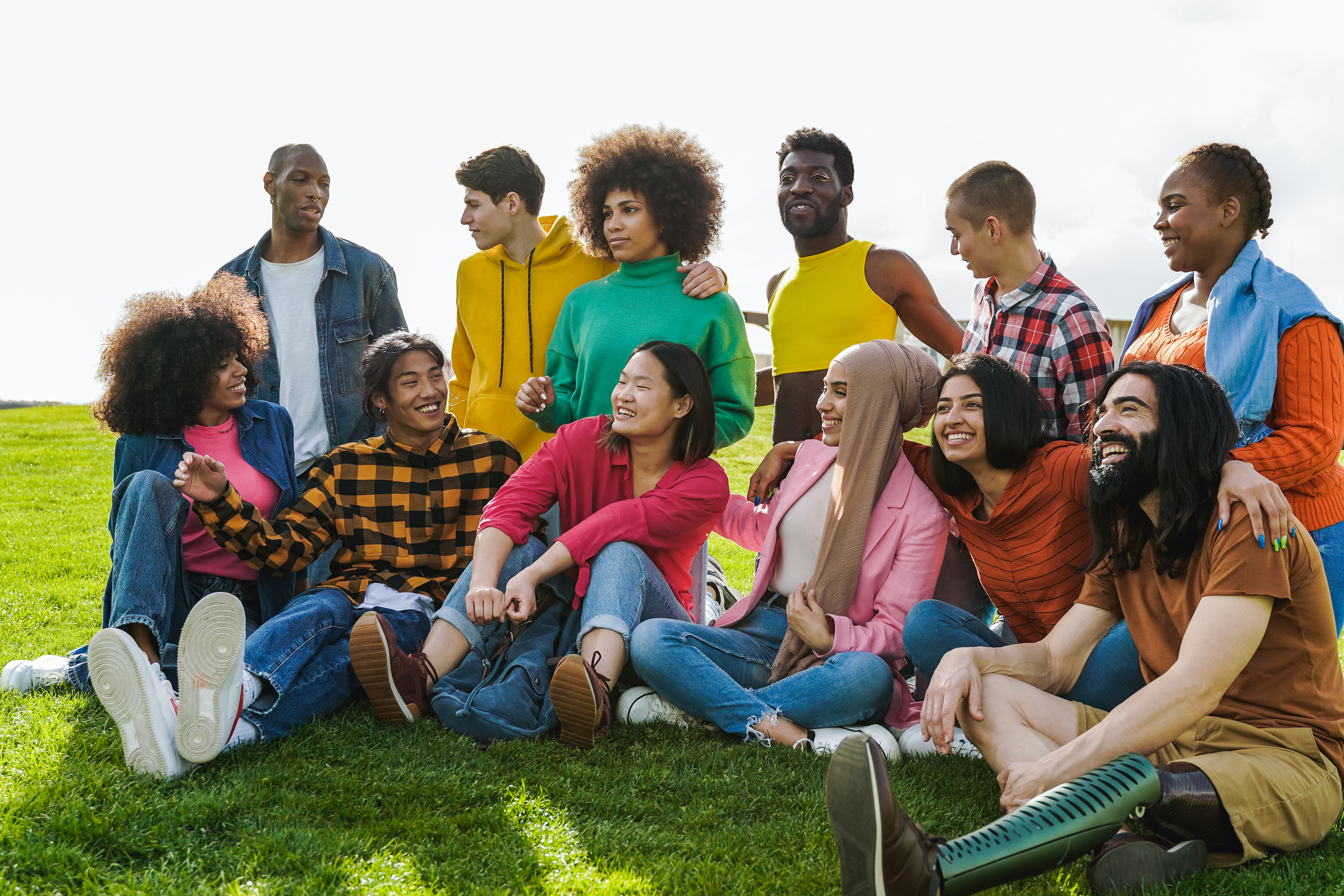Our lives are made up of fleeting moments; hence, we want to forever capture the best ones. These moments can be stored not only through our gadgets but also in our shelf of emotions. Fashion retailers need to leverage this desire by ensuring that consumers’ senses are engaged through innovative and interactive experiences.
Pop-up stores, though temporary, can make a significant impact and leave lasting memories on customers. While buying a product can bring happiness, simply seeing the product again might not rekindle that feeling. Fashion retailers should therefore create experiences that provoke and connect with the senses; memories of what we feel, hear, see, smell, and touch can last a lifetime.[1]
Sensory stimulation and social interactions in physical stores provide unique experiences that cannot be replicated online, enhancing customer engagement and brand loyalty.[2] As Hélène Poulit-Duquesne, Chief Executive of Boucheron, states, “Our clients should feel like friends of the house—it’s that sense of intimacy.”[3] Suzanne Santos, Chief Customer Officer of Aesop, adds, “With all the efficiencies that you can get from purchasing items online, there remains the need and desire to be with others.”[4]
Emotional experiences are key to forging lasting connections with customers. By creating memorable, sensory-rich experiences, brands can build strong, lasting relationships with them. Hence, the future of fashion retail lies in experiential marketing. Traditional retail models are like brooks that have dried up; it is time for retailers to create innovative ways for customers to engage with their products that go beyond consumerism.
Why Retail Evolution is Necessary
- Ease and Convenience of Online Shopping
Twenty years ago, clients visited boutiques solely to purchase products.[5] Today, consumers have an unprecedented variety of options for shopping and purchasing, facilitated by the ease of shopping apps. As a result, visiting a store feels like taking an extra step, requiring additional time and effort.
This shift in consumer behavior has pressured retailers, especially in the fashion sector, to innovate and remain competitive.[6] Retailers must now provide unique in-store experiences, seamless integration between online and offline channels, and personalized services to attract and retain customers.
- Rising Consumers Expectations
Social media platforms like Instagram, Tik-Tok, and YouTube provide instant gratification, endless distractions, and constant updates on evolving trends and technologies. In this fast-paced environment, yesterday’s innovations quickly become mundane and unoriginal. Only the most captivating experiences can stand out amid the plethora of options available. Consequently, our expectations have soared. We’ve seen too much, been there, done that. What’s new?
Given this context, today’s luxury shoppers inevitably have a heightened sense of what constitutes a superior retail experience. They desire engaging retail journeys that offer hyper-personalization and creative experiences.[7] These shoppers seek more than just products; they want immersive experiences that resonate with their values and provide a deeper connection to the brands they choose.[8] For example, almost 50% of frequent luxury consumers in North America surveyed believe that luxury stores should offer more than just a place to buy products.[9]
- The Influence of the Social Media Era
In today’s digital age, celebrities and influencers play a crucial role in marketing products. They attend pop-ups, shows, and various gatherings, advertising products and participating in the brand experience. Through their videos and posts, we vicariously experience their “moments,” gaining insights and forming opinions about the brand based on their endorsements and interactions.
As consumers increasingly value visual content, this trend highlights the importance of creating Instagram-worthy photo spots and eye-catching packaging to attract attention.[10] The visual in-store experience is now designed to be viewed through the lens of a smartphone camera, making pop-up stores perfect for creating shareable, aesthetically pleasing moments.[11]
From Transactions to Relationships: Experiential Retail as a Powerful Marketing Strategy
In light of this context, fashion brands must prioritize experiential marketing, which involves building strong customer relationships that extend mere transactions. This approach emphasizes creating emotional connections by delivering profound and memorable experiences. Retailtainment – making retail environments more entertaining, fun, and pleasurable – is a playful way of highlighting the hedonic and experiential aspects of the retail experience.[12]
Moreover, experiential retail seamlessly integrates physical and digital channels to create a cohesive omnichannel experience, significantly enhancing overall business performance.[13] By leveraging innovative technologies, brands can deepen connections with consumers, offering personalized interactions across multiple touchpoints.
Pop-up stores are an optimal way to achieve those goals. They entertain loyal customers and introduce new ones to a brand in a casual and approachable setting.[14] Pop-up experiences can encompass a wide array of activities, including museums, galleries, in-store events, workshops, augmented reality (AR) and virtual reality (VR) installations, exclusive collections, collaborations, themed environments, and food and beverage offerings.
“Pop-Up” the Relationship with Prada
Prada has done a great job executing a variety of pop-up experiences over the years, reflecting its commitment to artistic expression, innovation, creativity, and engagement. Here are some notable examples:
1. Pradasphere
Pradasphere is an example of how luxury brands can create a free multisensory exhibition designed to showcase the rich history, creativity, and craftsmanship of their houses.
· It featured curated collections of Prada’s iconic pieces, fashion artifacts (physical and digital), and artistic collaborations.[15]
· Interactive displays, multimedia installations, and diverse exhibits offered insights into Prada’s design philosophy and innovative processes.[16]
· The exhibition also included a café and retail section where exclusive Prada items were available for purchase.[17]
Photo description: Pradasphere II in Shanghai held at the Start Museum, whose original site was the first sea-to-land transport platform in modern China, and reimagined by Pritzker Prize winner Jean Nouvel.


2. Prada Flower Kiosk
Prada Flower Kiosk is an example of a unique campaign that offers a distinctive blend of fashion and floristry to spread springtime joy around the world.[18]
· At selected flower kiosks in city streets or upscale shopping malls, customers had the opportunity to purchase limited-edition packs containing various seeds ready for planting.[19]
· Additionally, the campaign integrated digital platforms by offering an exclusive filter for users uploading content to social media platforms. This 3D filter featured Prada’s flowers blooming on users’ screens with customizable special effects, enhancing digital engagement with the brand.[20]
3. Prada Caffè
Prada Caffè in Harrods is an example of how the fashion house is seamlessly integrating its luxury brand into the culinary world.
· It offers a comprehensive menu including breakfast, lunch, dinner, small bites, and aperitivo, in signature Prada interiors.[21]
· Guests can enjoy drinks and snacks on an outdoor summer terrace, with options available for takeaway.[22]
4. Prada Mode
Prada Mode is an example of how luxury consumers can engage in enhanced, creative, and immersive retail experiences through exclusive social clubs.
· Hosted in cultural hubs during major art and fashion events worldwide, such as Art Basel in Miami.[23]
· Integrated art, fashion, music, and dining to provide a multifaceted experience.[24]
· Featured art installations, live performances, panel discussions, and curated collaborations with local artists and chefs.[25]
Emotional Wellness and Experiential Retail
Experiential retail has broader implications than just being an effective marketing tool. It can contribute to our emotional wellness by fostering a sense of community and belonging. Humans naturally seek connections, and experiences that foster intimacy, happiness, and belonging can enhance overall well-being. André Lutfy, Chief Executive of Carbonleo, underscores this sentiment, stating that his mission is to bring people together in a place that ultimately makes them happy: “It’s all about emotional wellness.”[26]
In addition to fostering community, experiential retail can promote mental health by providing spaces for relaxation, creativity, and personal enrichment. Retail environments that incorporate elements like art installations, interactive exhibits, and wellness activities offer consumers opportunities for emotional rejuvenation. These experiences go beyond mere shopping transactions, creating lasting impressions and emotional connections that resonate with consumers long after they leave the store.
Conclusion
Experiential retail is more than a passing trend; it is a transformative strategy shaping the future of fashion retail. By emphasizing aesthetics, design, and immersive experiences, brands can carve a distinct identity in today’s crowded digital landscape. The shift towards creating memorable, sensory-rich environments in both pop-up stores and permanent retail spaces reflects evolving consumer expectations in the digital age. These approaches not only boost engagement and sales but also serve as effective platforms for promoting emotional wellness and enriching consumers’ lives. Thus, the future of fashion retail hinges on fostering meaningful interactions and delivering genuine value beyond products.
Author Bio: Seoryung Park
Seoryung Park is a New York licensed attorney with a certificate in IP. She earned her J.D. from the University of Connecticut School of Law, where she served as an associate editor for the Connecticut Journal of International Law. She holds a B.A. in criminology, sociology, and political science from the University of Toronto. With a background in teaching, Seoryung has a passion for educating others about fashion law. She aims to write articles that merge international perspectives, cultural insights, and thorough explanations, making complex legal matters accessible and engaging for every reader.
[1] Nicholas Moore, 9 Case Studies that Prove Experiential Retail Is the Future, STOREFRONT (last visited June 20, 2024), https://www.thestorefront.com/mag/7-case-studies-prove-experiential-retail-future/.
[2] Mark S. Rosenbum et al., The Benefits and Pitfalls of Contemporary Pop-Up Shops, 64 Bus. Horizons 93, 95 (2020), 10.1016/j.bushor.2020.10.001;
BOF INSIGHTS, The Evolving Art of Luxury Experiential Retail 23 (April 11, 2023), https://www.businessoffashion.com/reports/retail/bof-insights-luxury-experiential-retail-development-carbonleo-royalmount/.
[3] BOF INSIGHTS, supra note 2, at 24.
[4] Id. at 14.
[5] Id. at 24.
[6] Servais Elisa, 3 ‘Experiential Retail Environments’ in the Fashion Sector, 14 Fashion Practice, 3 (Nov. 2022),10.1080/17569370.2022.2124639.
[7] BOF INSIGHTS, supra note 2, at 3.
[8] Id.
[9] BOF INSIGHTS, The Evolving Art of Luxury Experiential Retail, BOF (Apr. 11, 2023), https://www.businessoffashion.com/reports/retail/bof-insights-luxury-experiential-retail-development-carbonleo-royalmount/.
[10] The Instagrammable Store: The Promise of a Differentiating Customer Experience, SQLI DIGITAL EXPERIENCE (Mar. 5, 2019), https://www.sqli.com/int-en/insights-news/blog/instagrammable-store-promise-differentiating-customer-experience.
[11] Id.
[12] Anne L. Roggeveen et al., Forging Meaningful Consumer-Brand Relationships Through Creative Merchandise Offerings and Innovative Merchandising Strategies, J. of Retailing 7 (2020), https://doi.org/10.1016/j.jretai.2020.11.006.
[13] BOF INSIGHTS, supra note 2, at 24.
[14] Rosenbum, supra note 2, at 96.
[15] Pradasphere Shanghai, PRADA, https://www.prada.com/ww/en/pradasphere/events/2023/pradasphere-shanghai.html.
[16] Id.
[17] Id.
[18] Sahira Dharamshi, In Conversation with a Flower: How Prada’s New Campaign is Spreading Springtime Joy Around the World, Harper’s Bazaar (Sept. 15, 2023), https://www.harpersbazaararabia.com/fashion/prada-launches-a-special-initiative-for-their-aw23-campaign.
[19] Prada Pop-Up Flower Kiosk, NYC For Free, https://www.nycforfree.co/events/prada-in-conversation-with-a-flower.
[20] Dharamshi, supra note 18.
[21] Prada Caffè, HARRODS, https://www.harrods.com/en-gb/restaurants/prada-caffe.
[22] Id.
[23] Special Projects Prada Mode Miami, PRADA Group, https://www.pradagroup.com/en/perspectives/stories/sezione-progetti-speciali/prada-mode-miami.html.
[24] Id.
[25] Id.
[26] BOF INSIGHTS, supra note 2, at 25.
















